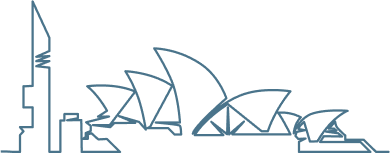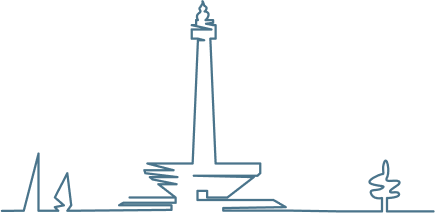Developers talk about “beautiful code” but you need reliability and ROI. Here’s the counterintuitive truth: aesthetic elegance in code and architecture directly correlates with system robustness, developer productivity, and business outcomes. Mathematical principles, thoughtful constraints, and deliberate design choices create systems that work better, fail less, and cost less to maintain.
This guide connects eight aesthetic principles to measurable business outcomes through principled aesthetic thinking applied to technical decisions. From mathematical elegance in system design to code as human communication, and from how constraints inspire creativity to developing taste and judgment, the guides below explore how symmetry, simplicity, and composability form the foundation of effective systems.
These eight guides cover foundational philosophy through practical implementation:
- The Elegance Principle — Mathematical foundations of robust systems
- Code as Literature — Documentation excellence as competitive advantage
- The Beauty of Constraints — How limitations force elegant solutions
- Visual Debugging — Diagrams as design methodology
- The Music of Monitoring — Pattern recognition with ROI implications
- Architecture as Sculpture — What you deliberately don’t build
- The Taste Problem — Developing aesthetic judgment systematically
- Minimalism versus Maximalism — Context-based architectural philosophy
Why Does Mathematical Elegance Matter in Software Architecture?
Mathematical elegance—characterised by symmetry, minimal complexity, and surprising power from simple axioms—directly predicts system robustness. Systems built on elegant mathematical foundations like Git‘s directed acyclic graphs or Redis‘s single-threaded model exhibit fewer bugs because they’re easier to reason about formally.
Elegant architectures compose predictably, scale naturally, and resist the entropy that plagues over-engineered systems. When mathematicians succeed as architects, it’s because their training reveals essential versus incidental complexity. Beauty signifies deep structural coherence.
Understanding mathematical beauty in software design provides the philosophical foundation for recognising why elegant systems work better, with detailed exploration of how symmetry and composability create reliability.
How Can Code Become Literature Rather Than Just Instructions?
Code serves two audiences: machines that execute it and humans who must understand, modify, and maintain it. Treating code as literature—applying narrative structure, clarity, and aesthetic consideration—transforms maintenance from archaeological excavation to comprehension.
Literate programming and documentation excellence (Stripe‘s API documentation, SQLite‘s extensive comments) demonstrate how code-as-communication reduces cognitive load, accelerates onboarding, and becomes competitive advantage. When new developers understand your system in days rather than months, that force multiplier directly impacts team productivity.
Code as human communication transforms documentation from afterthought to strategic asset, exploring how literate programming principles create maintainable systems.
Why Do Constraints Often Lead to Better Design?
Constraints paradoxically enhance rather than restrict quality by forcing creative abstraction and preventing over-engineering. Redis’s single-threaded model eliminates concurrency complexity while achieving strong performance. SQLite’s self-contained design enables deployment anywhere without configuration.
Strategic limitations channel design energy toward essential problems, producing systems that do less but accomplish more. Unix pipes‘ text-only constraint creates universal composability. When you embrace the right constraints, you discover solutions that unlimited options never reveal.
How limitations inspire creativity demonstrates how beautiful abstractions emerge through strategic limitation, with detailed case studies showing constraint-driven excellence.
How Do Visual Representations Reveal Architectural Truth?
Architecture diagrams aren’t documentation afterthought—they’re design methodology. Visual thinking reveals patterns, dependencies, and problems that code alone obscures. Applying information design principles (Tufte’s visual clarity, Alexander’s pattern thinking) to system diagrams transforms them from box-and-arrow clutter into truth-revealing tools.
Well-designed visualisations communicate architecture to non-technical stakeholders, expose circular dependencies, and make implicit design decisions explicit. Effective diagrams don’t just document architecture—they reveal and improve it.
Visual thinking as design methodology provides practical guidance for creating architecture diagrams that reveal rather than obscure truth, drawing on cross-disciplinary information design principles.
What Can Music Teach Us About System Monitoring?
System monitoring exhibits aesthetic dimension through pattern recognition: normal behaviour creates rhythms, anomalies disrupt composition, alerts orchestrate response. Recognising patterns in metrics—like recognising melodies in music—becomes learned skill distinguishing effective from overwhelmed operations teams. Beautiful monitoring systems reduce cognitive load through clear signal-to-noise ratio, meaningful alerts, and comprehensible dashboards.
Pattern recognition constitutes operational effectiveness with measurable ROI. Around 70% of outages could be mitigated with effective monitoring, and companies with robust systems report 40% reduction in downtime. Teams with well-designed monitoring resolve incidents 50% faster. DevEx ROI ranges from 151% to 433% with top-quartile teams performing 4-5 times better than bottom quartile.
Pattern recognition in monitoring connects aesthetic practice to business outcomes, demonstrating how monitoring as composition reveals system behaviour through patterns and rhythms.
How Is Software Architecture Like Sculpture?
Architecture shapes possibility space through both presence and deliberate absence. Negative space—what you intentionally don’t build—matters as much as features. Japanese aesthetic ma (emptiness, negative space) and Dieter Rams’s principle “less but better” apply directly to API design, system boundaries, and architectural decisions.
Over-engineering results from failing to embrace negative space. Beautiful architecture creates room for future evolution by strategically leaving things out. When you decide what not to build, you’re exercising the highest form of architectural judgment.
Architecture as deliberate shaping explores how form, function, and negative space in system design create possibility space through what you deliberately don’t build.
Can Aesthetic Taste Be Systematically Developed in Engineering Teams?
Taste—the ability to consistently recognise and create aesthetic quality—is learned skill, not innate talent. Systematic cultivation requires exposure to excellence, deliberate practice through code review, mentorship from engineers with developed taste, and reflection on design decisions.
Organisations develop taste through standards, architectural decision records, exemplar codebases for study, and code review rubrics prioritising elegance alongside correctness. Teams investing in taste development see measurable improvements in code quality within 6-12 months. Taste development is investable capability.
Systematic cultivation of aesthetic sense provides practical frameworks for developing judgment in teams, showing how taste affects every aesthetic principle from mathematical elegance to architectural decisions.
When Should You Choose Minimalism Versus Maximalism?
Both minimalism (Redis, Basecamp) and maximalism (comprehensive frameworks, feature-rich systems) produce beautiful systems when aligned with context. Minimalism succeeds when constraints match problem domain, team skills support focused solutions, and maintenance simplicity outweighs feature breadth.
Maximalism succeeds when problem complexity warrants comprehensive tooling and users demand extensive functionality. Context determines appropriate philosophy—dogmatic adherence to either fails. The question isn’t which philosophy is better, but which fits your situation.
Context-based architectural philosophy resolves the false dichotomy between approaches, providing decision frameworks for when each philosophy succeeds with detailed case studies of both paradigms.
Code Aesthetics Resource Library
Philosophical Foundations
The Elegance Principle: Why Mathematicians Make Good Software Architects Mathematical beauty as functional foundation for robust systems. Discover how symmetry, composability, and mathematical coherence directly correlate with system reliability and fewer bugs.
Code as Literature: When Documentation Transcends Utility to Become Art Treating code as human communication, not just machine instructions. Learn from Stripe’s API documentation and SQLite’s extensive comments how documentation becomes competitive advantage.
Design Principles in Practice
The Beauty of Constraints: Why Limitations Inspire Creativity and Better Design How strategic limitations force elegant solutions. Redis’s single-threaded simplicity and SQLite’s self-contained design demonstrate constraint-driven excellence.
Visual Debugging: How System Diagrams Reveal Truth About Architecture Information design principles applied to system visualisation. Create diagrams that reveal architectural truth and communicate effectively to technical and non-technical audiences.
Architecture as Sculpture: Form, Function and Negative Space in System Design What you deliberately don’t build defines great architecture. Apply Japanese aesthetics and Dieter Rams’s principles to master architectural restraint.
Operational Excellence
The Music of Monitoring: Patterns, Rhythms and Alerts as Compositional Elements Pattern recognition as aesthetic practice with ROI implications. Understand how beautiful monitoring systems reduce downtime by 40% and resolve issues 50% faster.
Implementation and Culture
The Taste Problem: Why Some Engineers Consistently Build Beautiful Systems Systematically developing aesthetic judgment in teams. Practical frameworks for code review standards, mentorship programmes, and taste cultivation showing measurable improvement within 6-12 months.
Minimalism versus Maximalism in System Design: When Each Approach Succeeds Context-based framework for architectural philosophy. Decision criteria for choosing minimalist elegance versus comprehensive richness aligned with problem domain and team capacity.
Frequently Asked Questions
Is code aesthetics just about making developers happy?
Aesthetic elegance correlates directly with system robustness, maintainability, and business outcomes. Beautiful systems exhibit fewer bugs through reduced cognitive load and clearer architectural decisions. Elegant architectures accelerate feature delivery and reduce maintenance costs. Teams prefer working with beautiful code because it’s objectively easier to understand and modify, making developer satisfaction a natural outcome of structural quality. See how mathematical elegance creates reliable systems for deeper exploration of how mathematical coherence creates reliability.
How can I measure whether my systems are aesthetically sound?
Combine objective metrics (cyclomatic complexity, coupling, cohesion, code churn, defect density) with qualitative assessment. Low complexity scores, minimal coupling, and stable defect rates indicate structural elegance. Qualitatively, ask: Can new team members understand the system quickly? Do changes require touching many files? Are architectural decisions documented and coherent? Does the system resist entropy or accumulate technical debt rapidly? See pattern recognition in monitoring for quantification frameworks.
What’s the ROI on investing in code aesthetics?
Studies show 3-6 months for measurable team velocity improvements (faster feature delivery, reduced debugging time) and 6-12 months for retention benefits (reduced developer turnover). DevEx ROI ranges from 151% to 433% with top-quartile teams performing 4-5 times better than bottom quartile. Initial investment appears slower than “just get it done” approaches, but elegant systems maintain velocity while rushed systems accumulate technical debt that eventually halts progress. Given the velocity maintenance and debt accumulation patterns, investing in code aesthetics becomes essential for long-term system health. See monitoring patterns with ROI implications for detailed ROI analysis.
Can you really teach engineers to write beautiful code?
Yes—taste is learned skill, not innate talent. Systematic development requires: exposure to excellent codebases, mentorship from engineers with developed taste, deliberate practice through code review emphasising elegance, and reflection on design decisions through architectural decision records. Organisations investing in taste development see measurable improvements in code quality within 6-12 months. See systematic cultivation of aesthetic judgment for implementation frameworks.
Should I choose minimalism or maximalism for my architecture?
Neither dogmatically—context determines appropriate philosophy. Minimalism succeeds when constraints match problem domain and maintenance simplicity outweighs feature breadth. Maximalism succeeds when problem complexity demands comprehensive tooling. Balanced approaches (React: simple core, rich ecosystem) often work best. Ask: Does my problem’s inherent complexity justify architectural complexity? Can my team maintain a complex system? Do users need extensive features or focused functionality? See context-based framework for architectural philosophy for decision framework.
How do I balance delivery speed with code quality?
False dichotomy—elegant systems accelerate delivery over time while rushed systems accumulate debt that eventually halts velocity. Strategic technical debt is acceptable when consciously chosen with repayment plan. But sustained “just get it done” approach creates brittle systems requiring exponentially more effort for each change. Best practice: establish quality standards, make architectural decisions explicit through ADRs, invest in refactoring as continuous practice, and measure velocity trends over quarters, not sprints. See architectural form and negative space for balance frameworks.
Conclusion
Aesthetic principles function as practical tools for building systems that work better, fail less, and cost less to maintain. Beauty signals structural coherence with measurable business value.
Start with mathematical foundations of robust systems for foundational philosophy connecting mathematical beauty to system robustness. Then explore developing aesthetic judgment systematically for team implementation frameworks showing how to systematically develop taste.
Beautiful systems aren’t accidents—they result from applying principled aesthetic thinking to technical decisions. Your architecture choices today determine whether your systems resist or succumb to entropy tomorrow.












